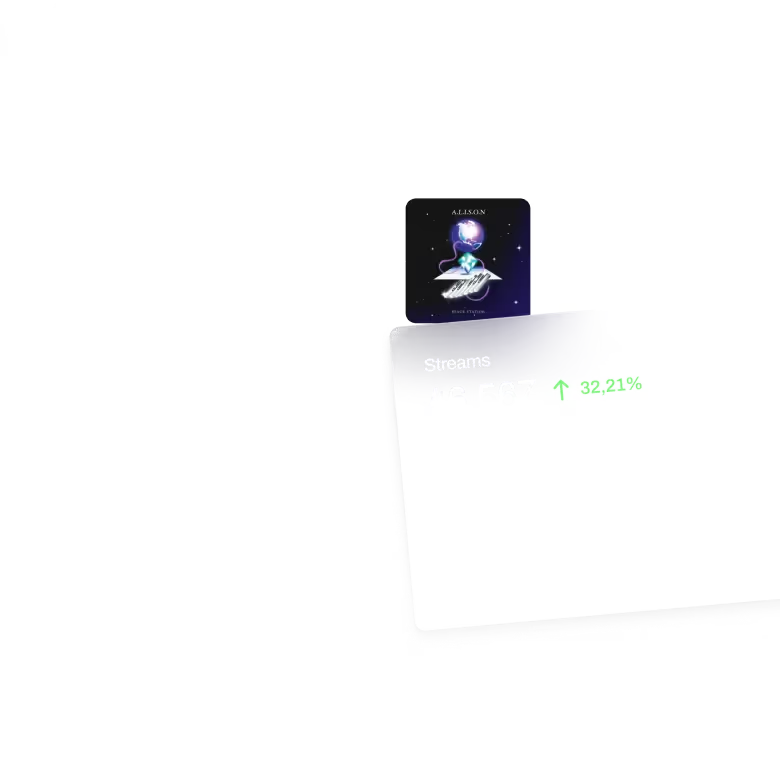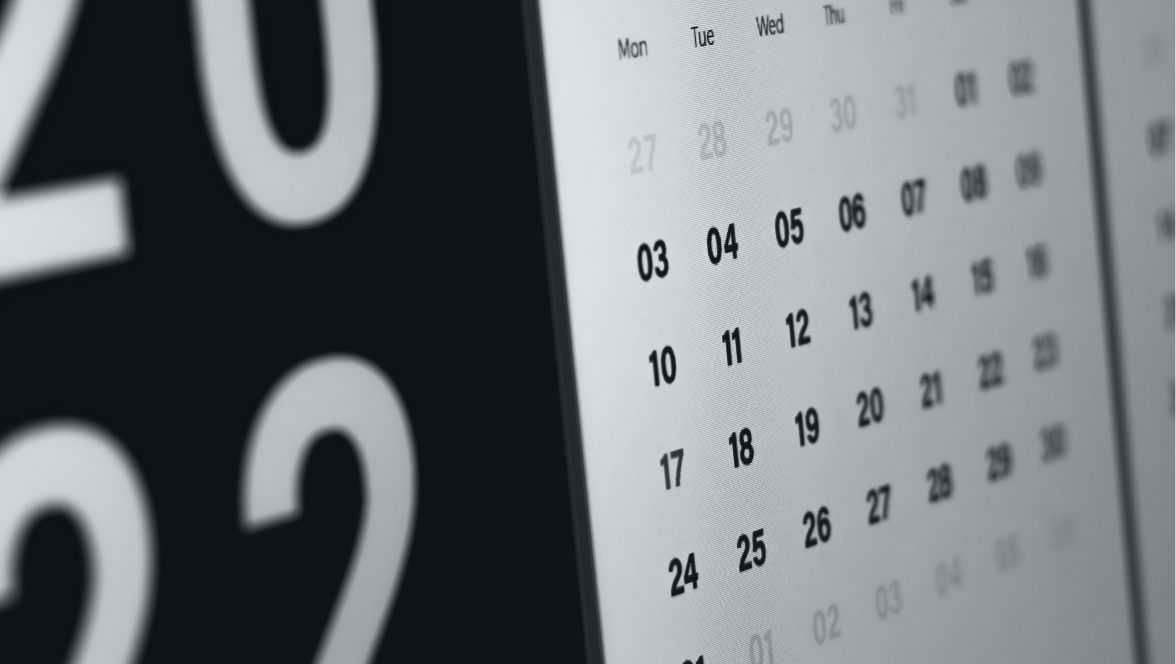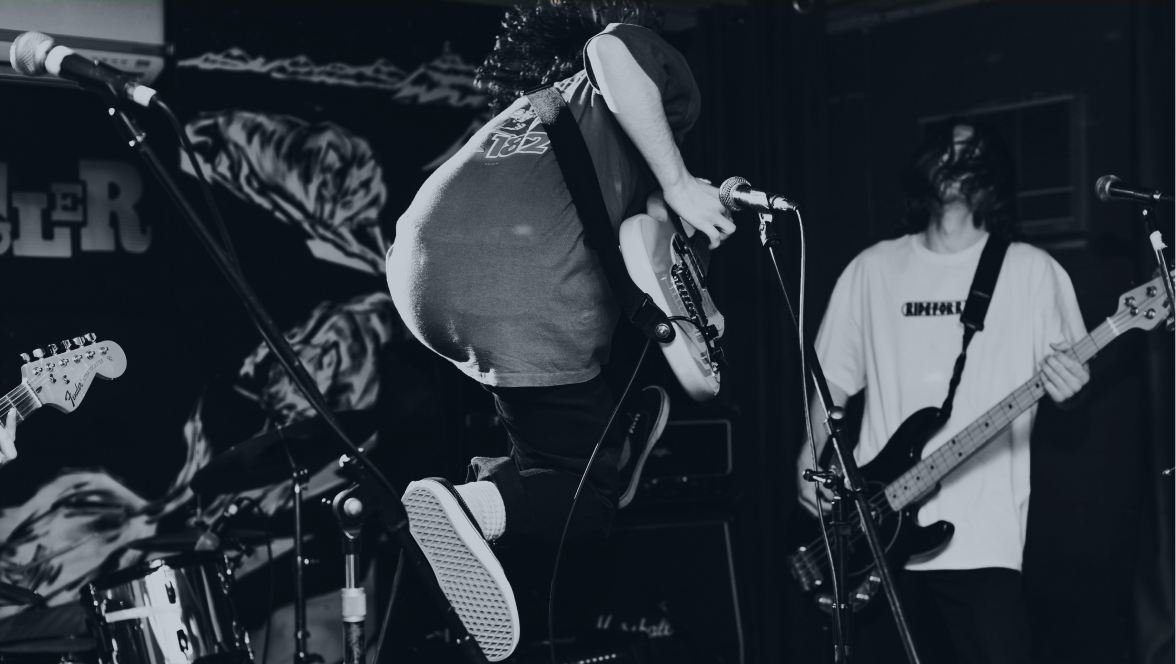
Artificial Streaming: fake streams, fraud & fines

Whether you’re a new, ambitious artist or you’ve been in the music game for years, the allure of boosting your streaming stats can sometimes feel irresistible…
What’s the harm in adding a few more streams to your data? No one gets hurt and you get more streaming revenue in your pocket – win-win, right?
Wrong.
All streaming platforms have strict rules against artificial streaming and any kind of fraudulent streaming methods – and if your music becomes the recipient of fraudulent streams, the consequences far outweigh any benefits.
Keep reading to learn all about artificial streaming, scams you should avoid and why the bots are so bad for your music career.
What is Artificial Streaming?
Artificial streaming is pretty much what it sounds like: streams of your music that aren’t ‘real’.
A legitimate stream is where an actual human being streams your music. An artificial stream is where a computer programme (bot) or other automated process streams your music.
Spotify defines an artificial stream as:
“A stream that doesn’t reflect genuine user listening intent, including any instance of attempting to manipulate streaming services like Spotify by using automated processes (like bots or scripts).”
Artificial streaming is usually the result of paying for streams or playlist features. Any service that offers you streams or playlist features in exchange for money is likely using illegitimate methods of streaming your music, regardless of how adamantly they claim to be legitimate.
Think about it: you’ve seen a company selling 1,000 ‘Real Spotify Plays’ for $6. How likely is it that there are really 1,000 actual humans ready and waiting to listen to your music in exchange for less than a cent per stream? Answer: very very unlikely. Despite claims to the contrary, these companies are relying on bots, AI and other fraudulent activities to deliver the ‘Real Spotify Plays’ they promise.
What does Artificial Streaming look like?
Artificial streaming often comes as the result of tracks being added to playlists that are then set to be played on repeat by bots. Third-party services that offer artificial streaming (or claim to offer ‘legitimate’ streams that definitely aren’t legitimate) will often add tracks from all their paying customers into a playlist – and that’s how they focus their stream bots’ activities on the tracks their customers have paid for.
In those cases, a spike in streams is often accompanied by a spike in playlist adds, but the stream bots are becoming more and more sophisticated, so artificial streaming is not always the result of a track being added to a playlist. More recently, we’ve seen artificial streaming coming from tracks being saved to bot libraries and being played directly from artist profiles too.

While it’s often the case that a spike in adds to playlists is a precursor to artificial streaming, a spike in saves and/or streams per listener can also be a red flag.
How much of a problem is Artificial Streaming in the music industry?
The music industry hit its lowest point in 2014, where the global music industry generated only $13 billion – but since then, streaming services have been instrumental in the industry’s resurgence and growth.
In 2020, 83% of music industry revenue generated in the US came from streaming. In 2023, Spotify alone had over 500 million active users (200 million of whom are paid Premium subscribers) and 7.1 trillion song streams were recorded. In 2024, 90 million people in the US paid for music streaming services (compared to just 7.9 million in 2014).
Streaming generated a whopping $19.3 billion in revenue in 2023 (48% more than the entire industry generated less than 10 years earlier in 2014), and is likely to continue rising.
With such a huge amount of money flowing through the music industry, it’s no surprise that streaming platforms have attracted fraudulent activity attempting to piggyback on the industry’s success.
Some artificial streamers are caught (and prosecuted) for their illegitimate streaming.
One US ‘musician’ was charged with wire fraud, wire fraud conspiracy and money laundering conspiracy after using AI to create hundreds of thousands of songs, then using around 10,000 bot accounts to stream his AI music over 4 billion times and claim $12 million in royalties. He faces up to a decade in prison if convicted.
Similarly, a Danish man was given an 18-month sentence (later extended to 24-months) and fined approximately $40,000 USD in 2024 for music streaming fraud after being paid $635k for artificially streamed music.
With $12 million in royalties being illegitimately generated by just one person, it’s reasonable to say that artificial streaming is a huge financial issue for the music industry.
Why is Artificial Streaming bad? Is it really music stream fraud?
Artificial streaming undermines the fair playing field that digital streaming services offer to artists.
The specific numbers of artificial streams aren’t clear, but estimates vary from 1% (the Centre National de la Musique estimated 1-3% of streams in France were fraudulent in 2021) to 7% (Deezer’s estimate of how many streams on its platform were fraudulent in 2022) – which means that a decent chunk of royalties are going to illegitimate streaming services, rather than to artists who’ve generated legitimate streams of their music.
It might seem like it’s just the streaming platforms being affected by artificial streaming, as they’re the ones who foot the bill. But in reality, every single artist is being impacted.
Platforms like Spotify pay royalties out from a limited pool of money, generated by ad revenues and paid-for subscriptions. At a basic level, that pool of money is split per stream and paid out to artists. In this model, if the pool of money stays the same but the number of streams increases due to artificial streaming, the revenue per stream will fall – simply because the pool is split in more ways.
That’s a simplification of how streaming platforms actually split revenues and pay royalties, but the point is that there isn’t an unlimited amount of money to pay artist royalties. The more money diverted to artificial and illegitimate streams, the less money there is available to pay artists building their music careers by legitimate means.
What happens if my music is streamed by bots?
Aside from potentially incurring criminal charges, like this US musician, paying for artificial streams of your music (whether you do so intentionally, find yourself believing false promises or have tracks added to fraudulent playlists without your knowledge) can severely harm your music career.
Streaming platforms invest a lot of time and money into systems and technologies that are sophisticated enough to detect artificial streaming. Paying for third-party services that use artificial streaming to boost streaming statistics is specifically prohibited by most streaming platforms in their terms of service (including Spotify, Apple Music, Deezer and more), which means that those platforms have the ability to deny you services as an artist and prevent you from releasing your music there.
Usually, the consequences aren’t quite that severe – depending on the extent of artificial streaming detected. Spotify’s usual penalties for artificial streaming are:
- Those artificially generated streams do not earn royalties.
- Those streams are removed from public stream counts.
- Those streams do not positively influence recommendation algorithms.
With those three penalties in place, artists who’ve paid for artificial streams have gained nothing – which is every streaming platform’s goal.
If artists are continually or prolifically using illegitimate methods to increase their streaming stats, Spotify can apply additional penalties:
- Removal of the track from Spotify playlists.
- Removal of the track from Spotify altogether.
- Issuing a per-track charge to labels or distributors.
Spotify will notify the track’s distributor (us, if you’re an Identity Music artist!) who may themselves issue artists with warnings or penalty fees, suspend the user’s distribution account or remove the identified tracks from Spotify.
The penalties and processes other streaming services follow when artificial streaming is detected on an artist’s account vary, but there are similar consequences across most platforms.
How to prevent Artificial Streaming of your music
Sometimes, you can do everything right and follow all the rules, but your tracks might still be being artificially streamed.
Your tracks can be added to public playlists by anyone – and those public playlists might then be the subject of artificial streaming activities. If it’s not something you’ve paid for or actively sought out in anyway, it can be frustrating if your tracks are flagged as being artificially streamed without your knowledge – particularly when the consequences can include permanent removal of tracks.
So, what can you do to spot the warning signs of artificial streaming and protect your legitimate streams from being penalised too?
The first and most obvious thing you can do to prevent artificial streaming is this: don’t pay for any services that promise to increase your streaming stats or place you in playlists. If you’ve read up to this point, it should be clear that paying for these services is not recommended, allowed or in any way worth it.
If you hire a PR or marketing company that you feel is legitimate and trustworthy, but then notice an increase in your streaming data that feels too good to be true, ask the agency to provide you with data about their activities and the sources of the streams you’re receiving. If you’re not satisfied with their responses, there’s a chance they’re using artificial streaming methods and you might want to consider ending your relationship with them as soon as possible.
Another thing you can do is to keep an eye on your streaming data, just like the streaming platforms do. If you notice a sudden spike in streams that you can’t attribute to your promotional efforts, a sync feature or anything else legitimate, it’s possible artificial streaming is the culprit. Indications of potential artificial streaming include:
- A sudden and shortlived spike in streams that doesn’t match your promotional efforts.
- A spike in streams from a new location.
- A spike in streams coming from unknown or untraceable sources.
On Spotify (and on most other major streaming platforms, like Amazon, Apple and Deezer) you can see which playlists your tracks have been added to from within your artist account. There are some things you can look out for when trying to spot illegitimate playlists, including:
- Playlist artwork that’s obviously AI-generated.
- Multiple similar playlists created by the same user.
- Playlists created by user accounts that don’t look or behave like a real human would, e.g. having thousands of followers, hundreds of playlists, no profile picture, and a generic username (especially one that looks like a random string of numbers and letters).
If you’re unsure if a playlist is legitimate or not but are concerned about your added track receiving artificial streams, you should report that playlist to the streaming platform for investigation. Being active in your efforts to prevent artificial streaming tells platforms that you’re a legitimate artist building your music career in a non-fraudulent way.
What to do if you suspect your music is being artificially streamed
If you think one of your tracks is being artificially streamed, the worst thing you can do is sweep it under the rug and ignore it.
Those telltale signs of artificial streaming you’ve spotted will have been picked up by the streaming platform too – and they won’t be ignoring it. Leaving the situation alone and hoping for the best isn’t going to work.
If you’re an Identity Music client, the best thing to do is to reach out to us and let us know what you’re concerned about. We’ve seen artificial streaming many times and we know the signs to watch out for. If we agree that your streaming activity seems suspicious, we’ll advise on what to do next to protect your legitimate streams.
If a spike in your streams coincides with your track being added to a suspicious-looking Spotify playlist (think AI artwork, generic name, lots of bot-looking followers), you can take proactive action and report that playlist to Spotify yourself through your Spotify For Artists account here.





